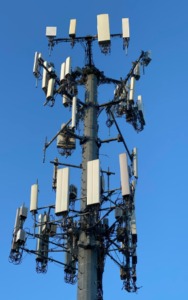AT&T customers nationwide have found themselves grappling with a staggering outage, thrusting millions into a state of communication disarray. Reports flooding in from various corners of the country indicate a widespread disruption in phone services, sending shockwaves through communities and businesses alike. As the outage persists, concerns mount regarding the extent of its impact and the timeline for restoration.
The ordeal began with sporadic complaints emerging from different regions, initially dismissed as isolated incidents. However, as the number of affected users surged, it became evident that AT&T, one of the nation’s leading telecommunications providers, was facing a substantial technical challenge. Customers from bustling metropolises to remote rural areas found themselves unable to place calls, send texts, or access crucial data services, underscoring the ubiquity of the disruption.

Nationwide Outage Plagues AT&T
The ramifications of such an outage extend far beyond mere inconvenience, especially in an era where seamless connectivity is integral to daily life and critical operations. Emergency services, businesses relying on telecommunication infrastructure, and individuals dependent on their phones for essential communication suddenly found themselves cut off from the outside world. The implications for public safety and economic activity are profound, prompting urgent calls for swift resolution from affected parties and stakeholders.
As news of the outage spread like wildfire across social media platforms and news outlets, AT&T scrambled to address the crisis and provide reassurance to its bewildered customer base. Initial statements from company representatives acknowledged the issue but offered little clarity on the underlying cause or the anticipated timeframe for resolution. Frustrated users took to online forums to vent their grievances and seek solace in shared experiences, while others turned to alternative means of communication in a bid to circumvent the disruption.
Amidst the chaos, speculation ran rife regarding the root cause of the outage, with theories ranging from cyberattacks to infrastructure failures. However, without official confirmation from AT&T, such conjecture only served to exacerbate the sense of uncertainty prevailing among affected customers. Questions regarding the robustness of the telecommunications network and the adequacy of contingency plans in the face of such contingencies lingered in the collective consciousness, casting a shadow of doubt over the reliability of modern communication systems.
For businesses reliant on AT&T’s services, the outage posed a significant operational challenge, disrupting workflows and impeding productivity. From small enterprises to multinational corporations, the inability to maintain seamless communication with customers, partners, and employees exacted a toll on revenue streams and eroded confidence in the reliability of telecommunications infrastructure. In an increasingly interconnected world where every minute of downtime translates into tangible losses, the imperative for resilient communication networks has never been more apparent.
As the hours turned into days and the outage persisted, pressure mounted on AT&T to expedite the restoration efforts and provide timely updates to assuage concerns. The company’s response, characterized by a combination of technical troubleshooting and damage control, sought to strike a delicate balance between transparency and maintaining public confidence. Updates via social media channels and official statements to the press served as lifelines for customers craving information in the midst of uncertainty, albeit with varying degrees of clarity regarding the timeline for resolution.
Behind the scenes, teams of engineers and technicians worked tirelessly to identify and rectify the underlying issues plaguing the telecommunications infrastructure. From conducting comprehensive diagnostics to deploying field personnel for on-site interventions, every available resource was mobilized in the quest to bring services back online. Yet, the sheer scale and complexity of the outage posed formidable challenges, testing the limits of AT&T’s technical prowess and resilience in the face of adversity.
As the sun rose on the dawn of a new day, a glimmer of hope emerged on the horizon as reports trickled in suggesting signs of progress in the restoration efforts. Incremental improvements in service availability offered a ray of optimism to beleaguered customers, hinting at the prospect of normalcy gradually being restored. However, for many, the scars of the outage would linger as a stark reminder of the fragility of modern communication infrastructure and the imperative for robust contingency planning.
In the aftermath of the crisis, reflections abound regarding the lessons learned and the steps needed to prevent a recurrence in the future. From investing in redundancy measures to enhancing cybersecurity protocols, the imperative for proactive measures to safeguard against unforeseen disruptions has never been more apparent. As society navigates the intricacies of an increasingly interconnected world, the resilience of critical infrastructure such as telecommunications networks remains paramount in ensuring continuity and mitigating the impact of potential disruptions.
As the dust settles and the tumult of the outage fades into memory, the resilience of the human spirit and the power of collective action stand as enduring testaments to our capacity to overcome adversity. While the scars of the outage may linger, they serve as a poignant reminder of the indispensable role that communication plays in binding society together and forging connections across boundaries. In the annals of history, the great AT&T outage of [insert date] will be remembered not only as a trial by fire but also as a testament to the resilience of the human spirit in the face of adversity.
